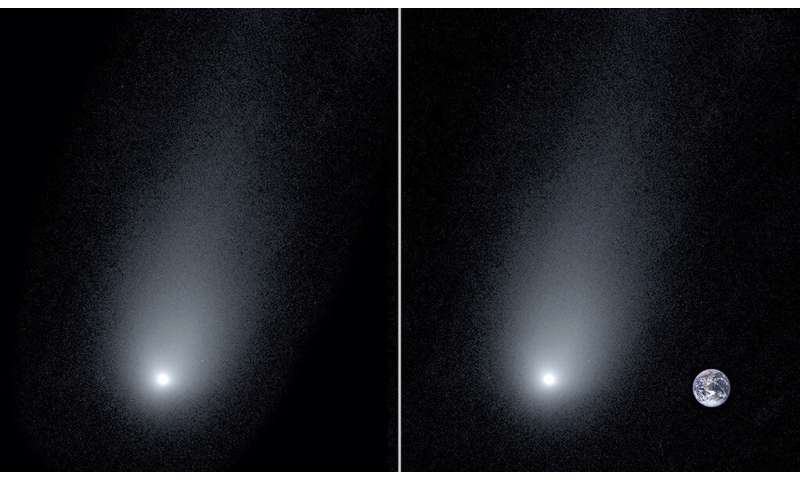It's a comet from another solar system. And it may tell us a lot more than 'Oumuamua did. Why?
Because 2I/Borisov has a tail.
Yes, that's the Earth for scale...the tail is huge. The comet's closest approach to us will be about 190 million miles...in the next couple of weeks. Telescopes trained on the tail may be able to tell things about the building blocks of another solar system, and thus about planetary formation. Just like with comets from our Oort cloud, we can use spectroscopes to identify what the tail is made of. Most likely we'll see the same things we see in local comets - things like water (yes, water, that's why science fiction writers like to crash comets into planets), carbon monoxide, cyanogen, etc. Also a lot of dust.
But we may still learn something.
2I Borisov will make its closest approach to the sun on December 8 (at which point its tail will be at peak) and to the Earth on December 28. Look for it in the constellations Crater and Hydra. For typical US latitudes, this will be fairly low and to the south two hours before sunrise. It's not naked-eye visible, though...you'll need a good scope.
The comet is not predicted to be captured by the sun, and will undergo only a minor course change as it passes through our solar system to parts as yet unknown. (Yes, it is theoretically possible for an interstellar comet to be captured and pulled into a solar system orbit and indeed possible that some of our local comets came from somewhere else, but this is the first time we've known for sure.

No comments:
Post a Comment